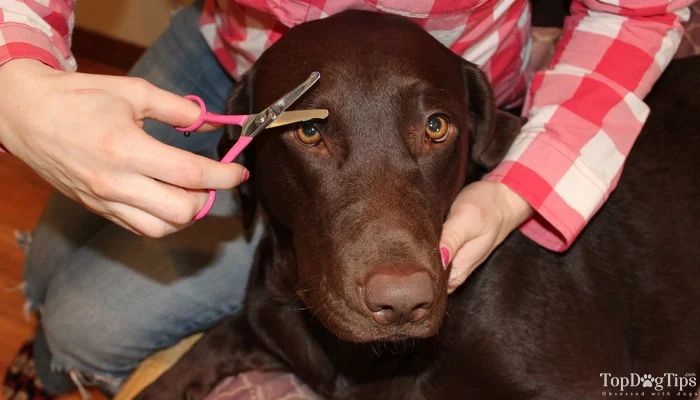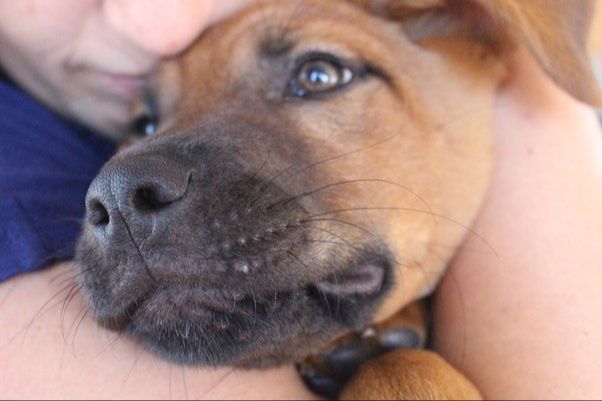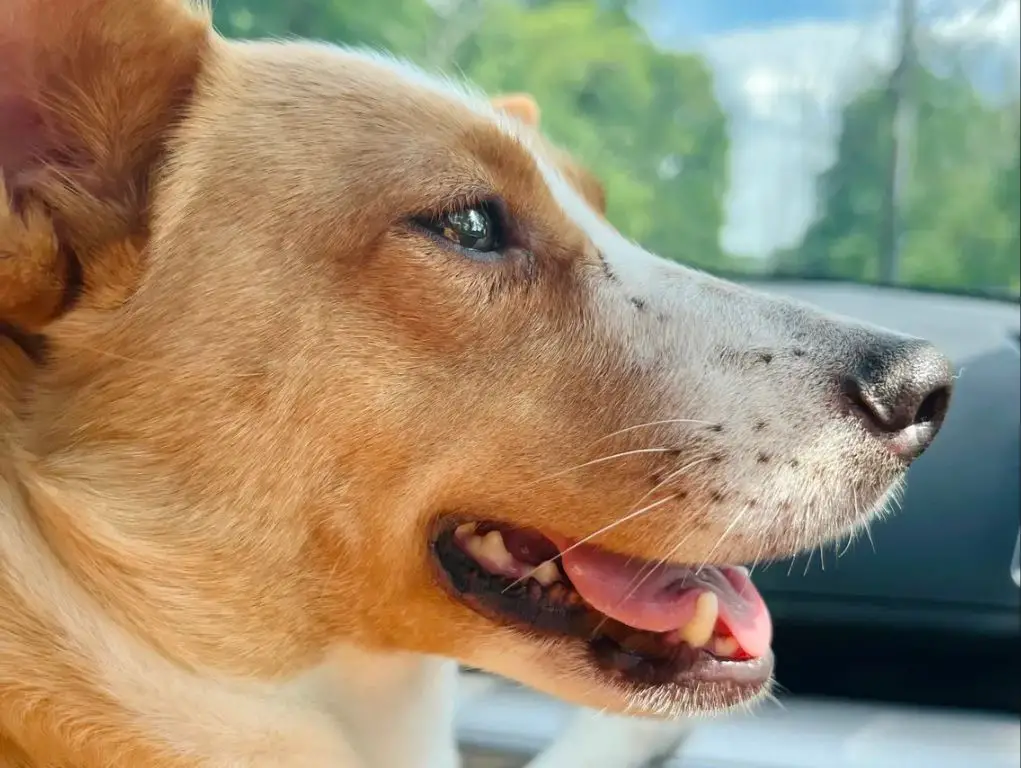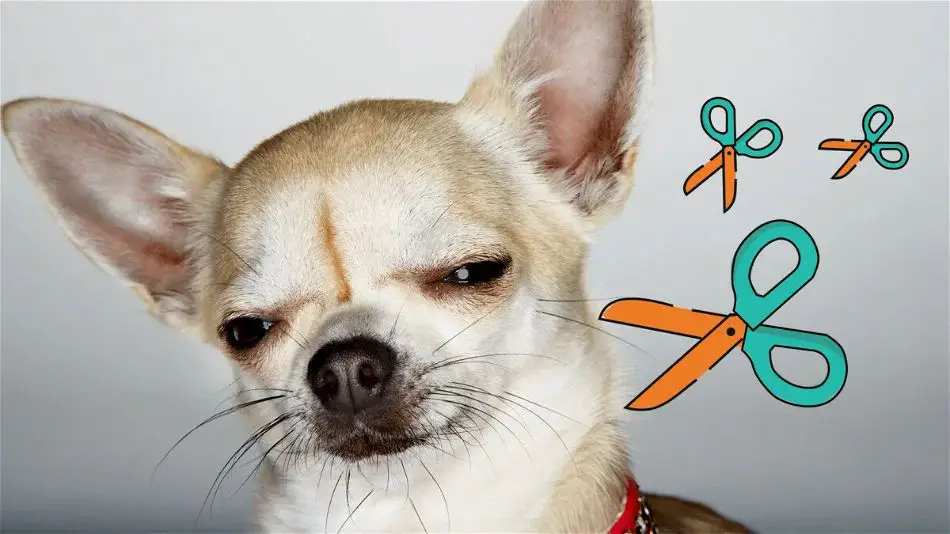What are dog whiskers?
Dog whiskers, also known as vibrissae, are specialized hairs that grow around a dog’s face, muzzle, eyes and above their forelegs. Unlike regular dog fur, whiskers have a sensory function thanks to an abundance of nerve endings at their base (source: https://www.webmd.com/pets/dogs/what-to-know-dogs-whiskers).
Whiskers aid a dog’s spatial awareness and navigation by providing tactile information about their surroundings. The whiskers detect subtle air currents and vibrations, acting as an early warning system for objects near the dog’s head. This helps dogs judge openings and passages, protecting their face and eyes from bumps or scrapes (source: https://vcahospitals.com/know-your-pet/why-do-dogs-have-whiskers).
The longest whiskers are on a dog’s muzzle, called genal vibrissae. Shorter whiskers above the eyes are called supraorbital vibrissae. Tufts under the chin are termed interramal vibrissae. Together this whisker array gives dogs a detailed sensory map of their close surroundings.
Should you trim dog whiskers?
Trimming a dog’s whiskers is generally not recommended as whiskers serve important sensory functions for dogs. Whiskers help dogs sense their surroundings and spatial orientation. Removing whiskers could potentially cause disorientation, anxiety, or balance issues in some dogs (https://canidae.com/blog/should-i-trim-my-dogs-whiskers).
However, light trimming may be appropriate in certain situations. For breeds with very long whiskers that regularly get food, water, or dirt stuck in them, light trimming can help keep the face clean. In show dogs, light trimming to neaten extremely long whiskers may enhance the dog’s look. When bathing dogs with dense facial hair, trimming the whiskers slightly can enable better shampoo and rinse penetration.
If trimming is necessary, only trim the ends slightly rather than cutting the whiskers too short. Never cut more than 1/3 of the whisker’s length. Use clean, sharp scissors and avoid pulling on the whiskers. Go slowly and carefully to reduce stress on the dog. Closely monitor the dog afterwards for any signs of disorientation or anxiety. The whiskers should fully regrow within 1-2 months.
Instead of trimming, gently wipe the whiskers clean with a damp cloth or use whisker wipes. Regular brushing can help keep long whiskers neat. For show dogs, consider using whisker wax or whisker netting instead of trimming. Only trim when absolutely needed, do it cautiously, and understand the risks (https://pawsafe.com/blogs/shampoos/can-you-cut-dog-whiskers).
How to Safely Trim Dog Whiskers

When trimming your dog’s whiskers, it’s important to use the proper tools and technique to avoid causing pain or injury. The best tools for safe whisker trimming are small, sharp scissors or clippers designed specifically for whiskers and sensitive areas. Avoid using human nail clippers, as these can pinch the whiskers instead of cutting them cleanly.
To properly trim the whiskers, gently grasp the whisker near the base and snip just the very tip, removing no more than 1/3 of the whisker’s length. Only trim the longest whiskers to even out the length, leaving most of the whisker intact. Never cut whiskers down to the skin. Go slowly and carefully to avoid cutting the whisker too short.
Dog whiskers should never be cut shorter than 1 inch in length if possible. The exception is show dogs, where whiskers may need to be trimmed shorter for aesthetic reasons. For pet dogs, follow the 1/3 rule – trim only the tips and leave the rest. This helps preserve the whiskers’ sensory function while tidying up their appearance.
Aftercare for trimmed whiskers
After trimming your dog’s whiskers, it’s important to monitor them closely for any issues. The whiskers provide important sensory information, so removing them can potentially cause temporary disorientation or clumsiness. According to one reddit user, their dog seemed more timid and unsure of his surroundings after a groomer trimmed his whiskers (source).

Keep the trimmed areas clean to prevent infection as the whiskers start growing back. Use a gentle pet-safe cleanser and avoid scrubbing. You may want to avoid activities like swimming for a few days to keep the areas dry.
Provide some extra accommodations while your dog adjusts. For example, keep an eye on their proximity to furniture and other objects they may bump into. You can pad sharp corners or block off narrow spaces temporarily. Go slowly when playing or exercising to allow them to re-adjust their sense of space.
The whiskers should grow back fully within days or weeks. But monitor for any lingering effects like uncertainty or clumsiness, and call your vet if you have concerns.
Whisker Regrowth Timeline
After whiskers are cut or pulled out, it can take anywhere from two weeks to three months or more for them to fully regrow to their original length. The growth rate depends on several factors:
Age – Puppies tend to regrow whiskers faster than older dogs. The regrowth process slows down as dogs age.
Breed – Some breeds like Poodles regrow whiskers relatively quickly, while breeds with coarser or slower-growing hair may take longer.
Overall health – Dogs who are ill or nutritionally deficient may experience slower whisker regrowth.
Amount trimmed – If most of the whisker was trimmed off, full regrowth will take longer versus just a minor trim.
During the regrowth phase, it’s important to monitor your dog closely and avoid any additional trimming. Be gentle around the muzzle area and watch for signs of sensitivity or irritation. Providing nutritional support through diet or supplements can help optimize regrowth. With patience and care, your dog’s whiskers should return to normal over time.
Trimming whiskers in puppies
In general, it’s best to wait until puppies are at least 3-4 months old before trimming their whiskers for the first time. Puppies use their whiskers to help explore their environment and gain spatial awareness in those early months. Removing whiskers too early could potentially disrupt normal sensory development.
Once puppies reach 12-16 weeks of age, their whisker sense has matured and light trimming likely won’t cause issues. However, some experts still recommend waiting until 6 months old before trimming. Check with your veterinarian on the appropriate timing for your specific breed.

When trimming puppy whiskers for the first time, only trim 1-2 millimeters off the ends. Monitor for any signs of distress or disorientation afterwards. It’s best to trim just a small amount at first to see how the puppy reacts. Not all puppies tolerate whisker trimming equally. Go slowly and don’t remove too much length all at once.
Puppies should always be supervised after whisker trimming for the first 24 hours. Watch for any unusual anxiety, clumsiness, loss of appetite or other behavioral changes. If anything seems off, avoid trimming again until the puppy matures more. With patience and proper acclimation, most puppies adjust to light whisker trimming just fine.
Breeds with whisker sensitivities
Some dog breeds are more prone to whisker sensitivity than others. This is often seen in breeds that naturally have prominent, large whiskers like Schnauzers and Poodles. Short-muzzled breeds like Pugs and Boston Terriers also tend to have sensitive whiskers since their muzzles are smaller and their whiskers are more dense and prominent.
Signs that a dog’s whiskers are irritated after trimming may include:
- Rubbing or scratching at their face
- Seeming anxious or distressed
- Bumping into objects more than usual
- Acting tentative and unsure in unfamiliar spaces
For breeds prone to whisker sensitivity, alternatives to trimming include:
- Carefully brushing the whiskers daily with a very soft brush
- Keeping the facial hair trimmed short around the whiskers
- Using a chemical hair relaxer or softener made for dog fur under veterinary guidance
- Leaving whiskers untrimmed and allowing for a natural look
Being very conservative with any trimming and stopping immediately if signs of irritation occur can help prevent discomfort. Leaving longer whiskers untouched is ideal for breeds with sensitivities.
Whisker care for senior dogs
As dogs age, their whiskers can become more brittle and prone to breaking. Senior dogs may also experience reduced whisker sensitivity. It’s important to be extra gentle when trimming an older dog’s whiskers.
According to Bark and Whiskers, regular massage can help keep senior dogs’ facial muscles toned, which may help preserve whisker strength. Only trim the bare minimum of a senior dog’s whiskers, as they rely on their whiskers more than younger dogs. Check for any signs of discomfort during and after trimming.
To keep senior dogs’ whiskers healthy, provide a nutritious diet with omega fatty acids to nourish skin and promote whisker regrowth. Also brush whiskers daily with a soft brush to remove dirt and distribute natural oils. Schedule more frequent vet checkups to monitor for any excessive whisker loss or unusual changes.
Preventing whisker trimming risks
Cutting whiskers can actually pose some risks for dogs, especially if done improperly or too frequently. Here are some tips to help prevent issues:

Use the right tools. Dog grooming clippers designed specifically for faces and muzzles can help avoid accidental whisker trimming. Scissors are another option, taking care to cut hair around the whiskers (source).
Take it slow and handle gently. Rushing through face grooming increases the chances of snipping whiskers. Holding the dog’s head firmly but gently helps ensure proper control (source).
Avoid trimming if whiskers seem overly sensitive. Some dogs may show signs of irritation when whiskers are clipped. Discontinue trimming if the dog seems distressed.
Skip frequent trims. Whiskers don’t need trimming as often as the rest of a dog’s coat. Leaving them alone as much as possible reduces risks.
See a groomer or vet if unsure. Professional groomers are trained in safe techniques. Consult a vet if the dog has ongoing whisker sensitivity or irritation.
When to see a vet about whiskers
While trimming dog whiskers is not recommended, some owners may choose to do so. In most cases, the whiskers will grow back normally. However, there are certain situations when you should consult your veterinarian regarding your dog’s whiskers:
Signs of infection or injury – If the area around the trimmed whiskers appears red, inflamed, or oozing, it could indicate an infection. Any signs of a wound or bleeding around the whiskers also warrants a vet visit. Infections need antibiotic treatment and injuries may require care to avoid further complications.
Abnormal whisker loss – If your dog is losing whiskers in patches or they seem to be falling out more than normal, it could signal an underlying health issue. Certain conditions like autoimmune disorders, hormonal imbalances, and follicular or skin disorders can cause abnormal whisker loss. Your vet can help diagnose the cause and recommend proper treatment.
Getting professional guidance – If you trimmed your dog’s whiskers and now have concerns about potential risks or complications, consult your vet. They can examine your dog, ensure proper healing, and advise you on safer trimming in the future or alternatives like whisker care products. Don’t hesitate to seek veterinary guidance, especially if it’s your puppy’s first whisker trim.